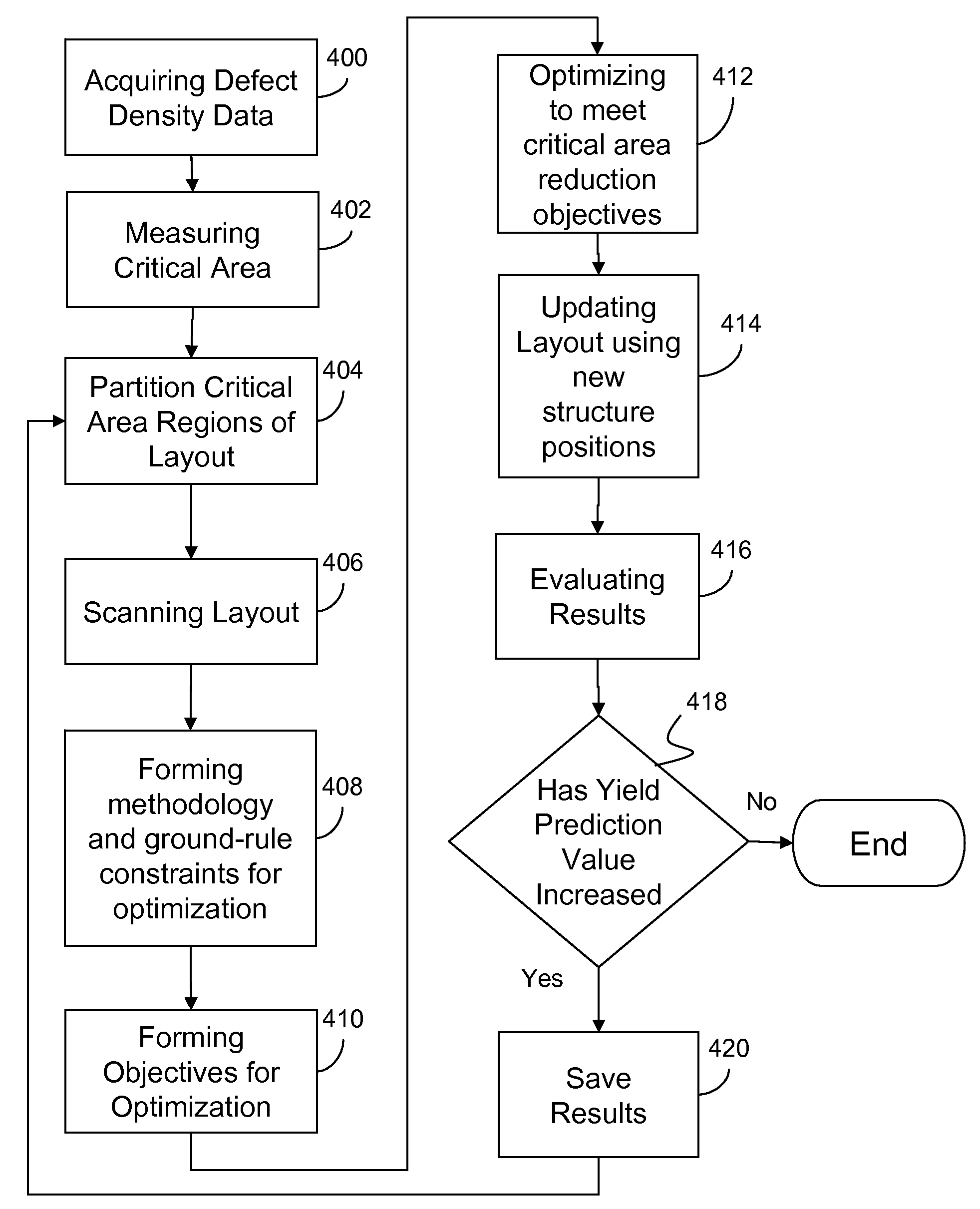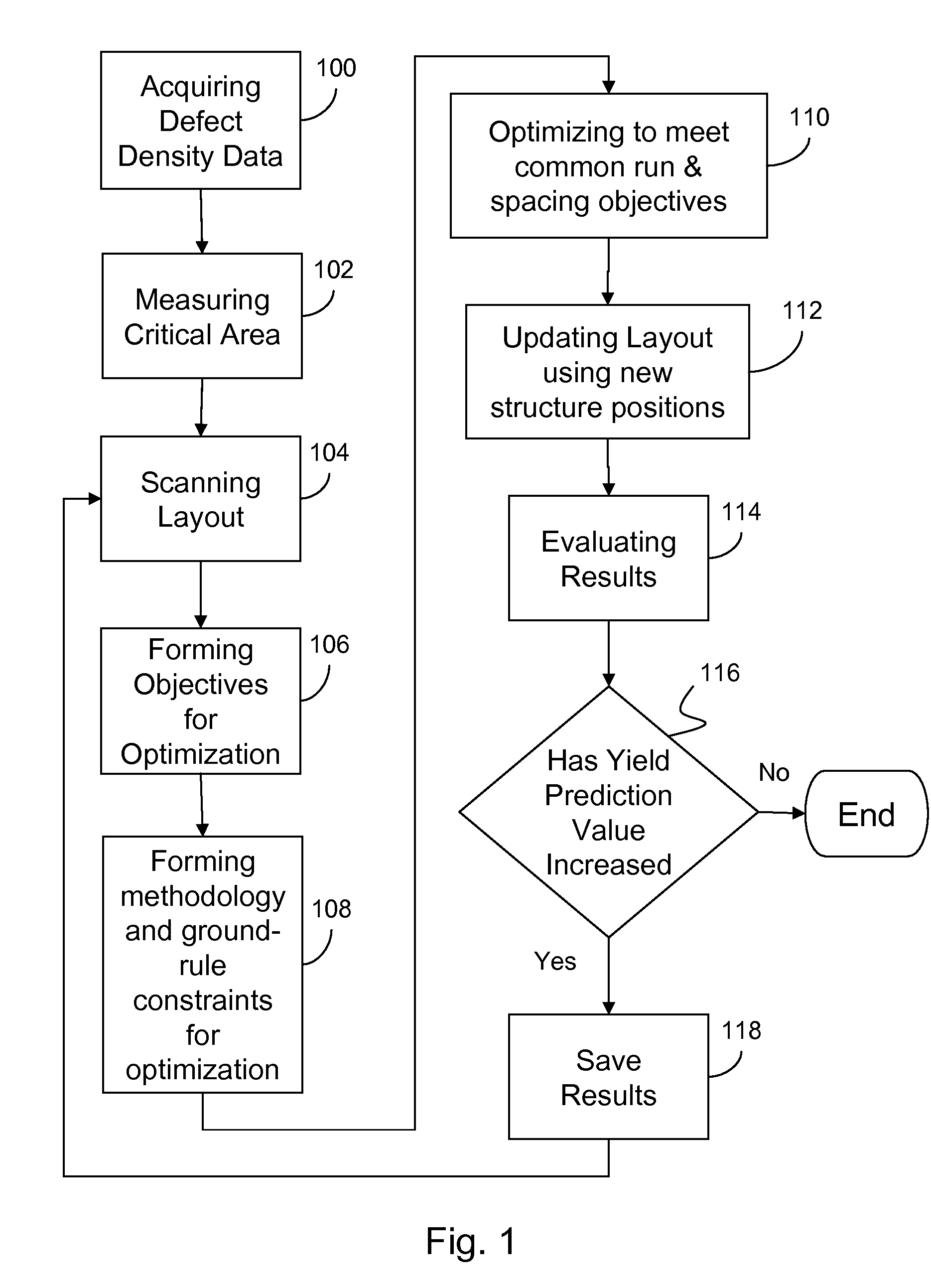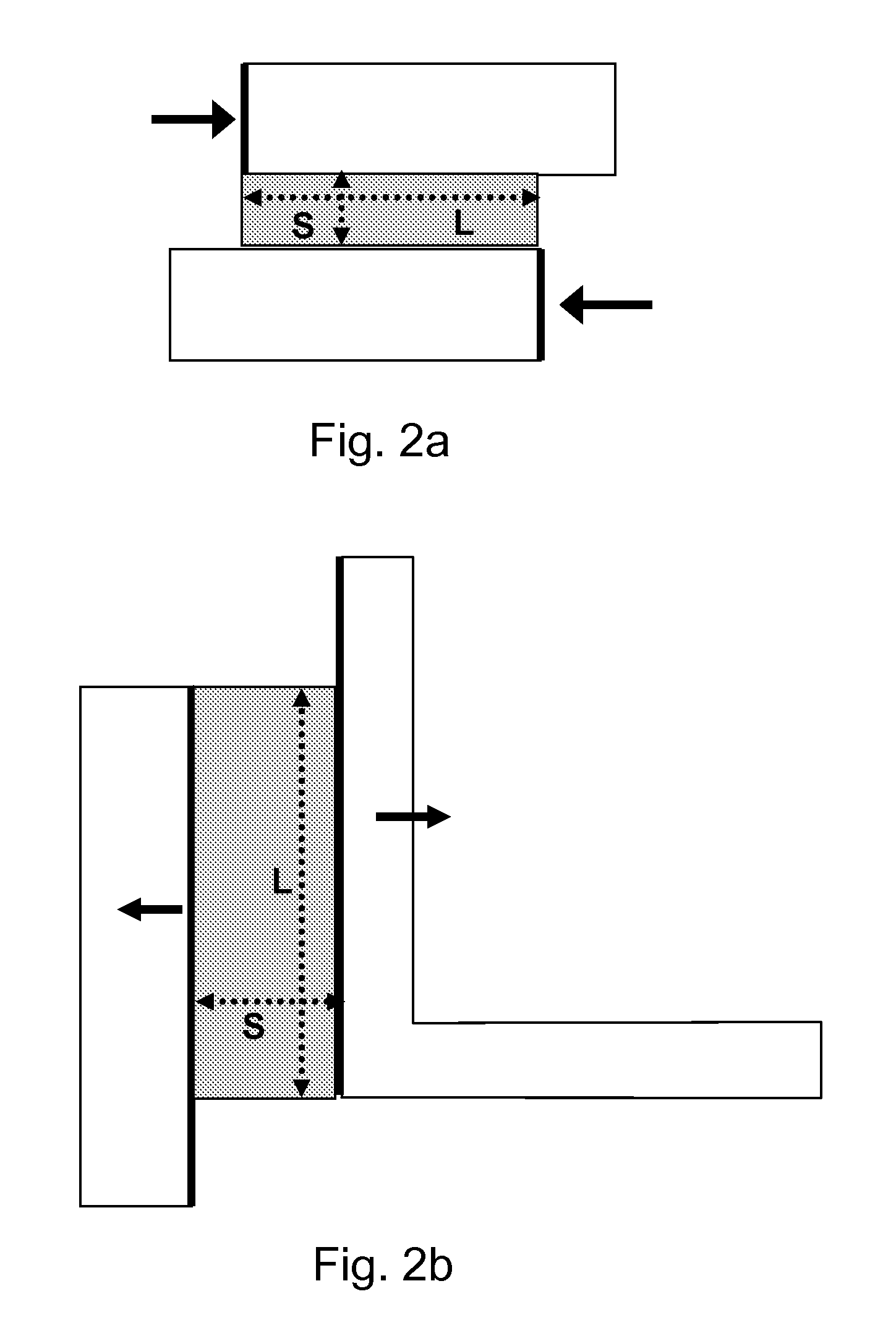IC Layout Optimization To Improve Yield
- Summary
- Abstract
- Description
- Claims
- Application Information
AI Technical Summary
Benefits of technology
Problems solved by technology
Method used
Image
Examples
first embodiment
[0022]FIG. 1 illustrates the method of a first embodiment, which identifies critical area in an IC layout using common run. In step 100, the method acquires defect density data provided by the manufacturing process. This data gives the estimated fault density for various defect mechanisms (e.g., short-circuit-causing faults on layer M1) and provides the input for step 102. In step 102 the method measures critical area based on the defect data.
[0023]In step 104, for a given layout, the method scans the layout and records L / S for each shape in the design, where L is the common run between adjacent parallel edges and S is the distance between the edges. The method compares the recorded information to the defect density data to identify critical areas and further, identify the critical areas with the higher probability of failures. The weight assigned to each of these critical areas is the product of L / S and a layer-specific constant for shorts, opens, random defects, or combinations of...
second embodiment
[0050]In the present invention, the method of identifying critical area in a VLSI design uses Voronoi diagrams, an example of which is shown in FIG. 4. A Voronoi diagram is used to enhance the computation of critical area. A Voronoi diagram of a set of 2D geometric elements (polygons, line segments, points) is a partition of the plane into regions representing those points in the plane closest to a particular geometric element. Here, closest is defined in terms of an appropriate geometry to represent a defect. These regions are called Voronoi cells 310, each of which is associated with its defining geometric element 312, called the owner of the cell. The set of points which separates two Voronoi cells is called a Voronoi bisector 314. The point where three or more Voronoi bisectors 314 (or Voronoi cells 310) meet is called a Voronoi vertex 316.
[0051]Based on the circuit design and under an appropriate geometry, Voronoi diagrams can be constructed to model the effect of extra-materia...
third embodiment
[0064]FIG. 10 illustrates the method of the third embodiment, which identifies critical area in an IC layout using geographical area information and associated critical area values to those locations. In step 600, the method acquires defect density data provided by the manufacturing process. This data gives the estimated fault density for various defect mechanisms (e.g., short-circuit-causing faults on layer M1) and provides the input for step 602. In step 602 the method measures critical area based on the defect data.
[0065]In step 604, for a given layout, the method scans the layout and records critical area values for each geographical area in the design. The method compares the recorded information to the defect density data to identify and map critical areas.
[0066]In step 606, the method builds a set of pair-wise objectives in one direction (e.g. vertically, horizontally) called the optimization direction, within the critical areas identified in step 604. For each critical area ...
PUM
 Login to View More
Login to View More Abstract
Description
Claims
Application Information
 Login to View More
Login to View More - R&D
- Intellectual Property
- Life Sciences
- Materials
- Tech Scout
- Unparalleled Data Quality
- Higher Quality Content
- 60% Fewer Hallucinations
Browse by: Latest US Patents, China's latest patents, Technical Efficacy Thesaurus, Application Domain, Technology Topic, Popular Technical Reports.
© 2025 PatSnap. All rights reserved.Legal|Privacy policy|Modern Slavery Act Transparency Statement|Sitemap|About US| Contact US: help@patsnap.com



